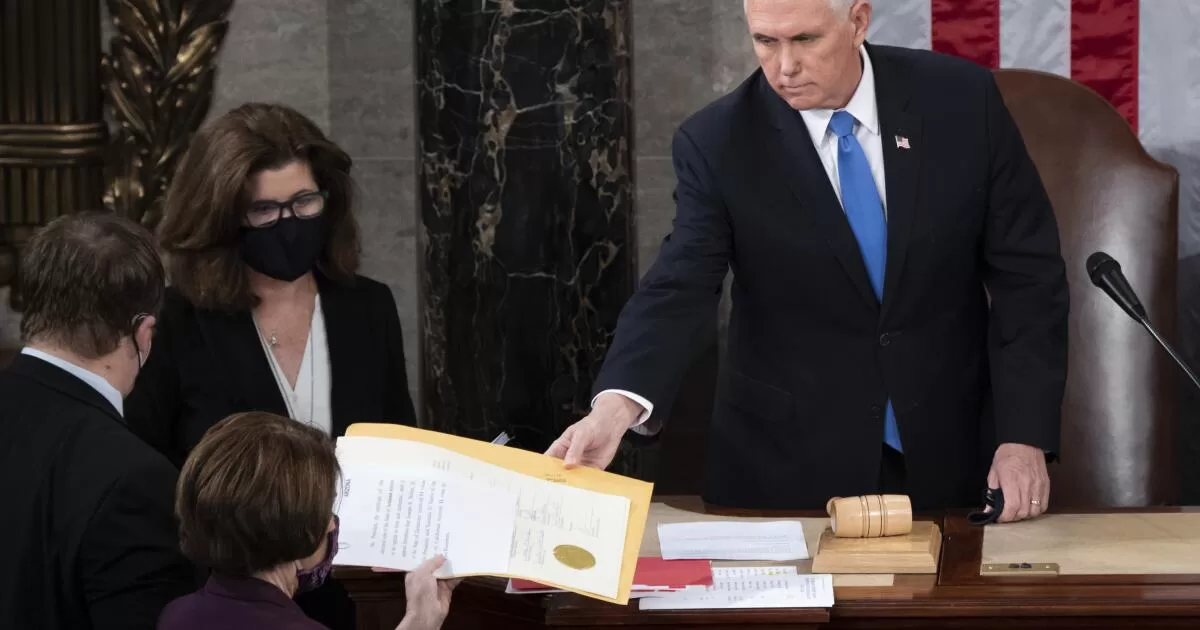After all the ballots in this year’s presidential contest are cast, the count will begin to be reported. But in the United States’ unusual election system, there are in essence two counts —the popular vote and the results in the electoral college.
Here’s how they work:
What is the popular vote?
The popular vote is your vote — the votes of the people. The popular vote is equal to the number of ballots cast.
What is the electoral college?
The electoral college is made up of 538 electors — one for every representative and senator in Congress, plus three for the District of Columbia. To become president, Vice President Kamala Harris or former President Trump needs to reach a majority of 270 electors.
The electoral college is based upon a state’s representation in Congress, which is based upon a state’s population.
As the most populated state in the country, California has the most electors: 54, for its 52 representatives and two senators. Harris is widely expected to win the popular vote in California, and therefore collect all 54 electors.
In most states, whichever candidate wins the popular vote in a state is awarded the state’s electors in a “winner-take-all” system.
However, two states — Maine and Nebraska — have a proportional representation electoral college. Both states award two electoral votes to the candidate who wins the popular vote, and then one for the winner of each congressional district (Maine has two congressional districts, Nebraska has three).
Each state’s political party generally appoints the slate of electors.
So how does a candidate become president?
To become president, a candidate must win 270 electoral votes.
A president can win the electoral college without winning the popular vote. This has happened four times in U.S. history, twice in the 1800s and twice this century. Trump lost the popular vote to Democrat Hillary Clinton but prevailed in the electoral college in 2016. Republican George W. Bush lost the popular vote in 2000 but defeated Democrat Al Gore.
What happens if the electoral vote is a tie?
If the candidates tie at 269 electors each, the election turns to the House of Representatives. Each state gets to cast one vote for president, and at least two-thirds of the chamber must be present to vote.
The last time the House of Representatives decided a presidential election was in 1824, when it picked John Quincy Adams.
Why do swing states matter so much?
While there are voters of many parties in every state, and those aligned with none, most states have a comfortable majority of either Republicans or Democrats.
In California, for example, 46% of registered voters are Democrats, compared with almost 25% Republicans and nearly 22% voters stating no party preference, as well as 7% others. With voter registration numbers like that, the Democratic candidate for president is almost guaranteed to win the popular vote and, as a result, the state’s electors.
However, in the seven swing states — Arizona, Nevada, Georgia, North Carolina, Pennsylvania, Wisconsin and Michigan — the numbers are much closer, so the popular vote can come down to a very slim margin.
In 2020, for example, Joe Biden won Pennsylvania by 80,555 votes over Trump, getting all of the state’s electors and clinching the presidency. Biden won some states by even smaller margins, such as Arizona, where he bested Trump by just over 10,000 votes.
When are electors certified?
The electors meet in their respective states on Dec. 17 to cast their ballots for president and vice president. Their votes are recorded on a certificate of vote, which is then sent to Congress.
On Jan. 6, a joint session of Congress is held to certify the electoral votes. As president of the Senate, the vice president presides over the joint session and announces the official count. In 2020, Vice President Mike Pence served this role, despite Trump’s objections and a mob that stormed the Capitol building in an attempt to disrupt the election certification.
The president-elect is inaugurated as president on Jan. 20.
Why do we have an electoral college?
When the Founding Fathers were drafting the Constitution, they created the electoral college process as a compromise between those who wanted Congress to pick the president and those who wanted to leave it to the people.
Some activist groups, like Making Every Vote Count, have been advocating to do away with the process by passing a constitutional amendment. Rachelle Chong, one of the group’s spokespeople, cited a 2023 Pew Research Center study that found 63% of U.S. adults want the presidency to be decided by the popular vote.
“The way a democracy works should be one person, one vote, right?” she said.
